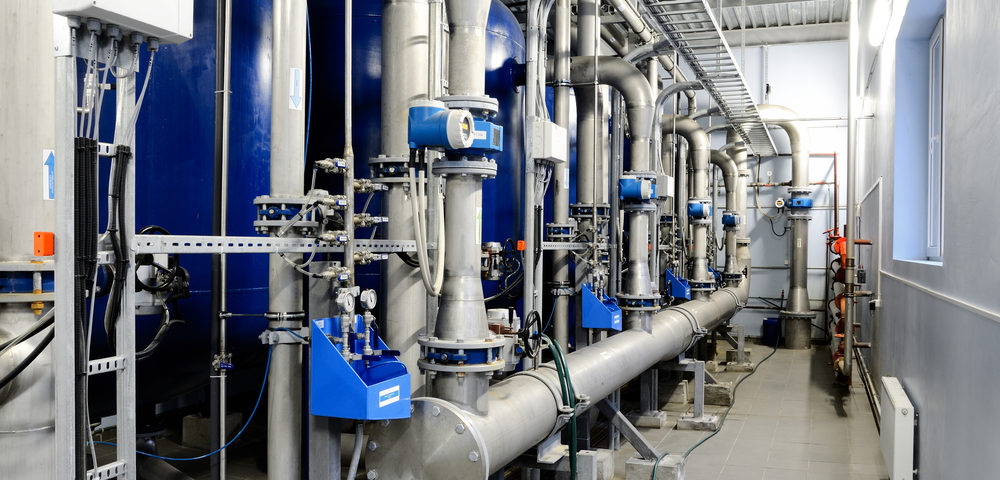Choosing the Right Boiler for Your Operation
Choosing the right boiler for an operation will ultimately be dictated by the heating requirements of the application and/or process, as well as project-specific factors, such as emissions, efficiency, location, cost, and access to available fuel sources. In every case, ensuring that the boiler has been expertly designed and fabricated for your specific needs is key to ensuring smooth and continuous operation.
Coal Boilers
Coal-fired boilers are commonly used to produce steam for industrial applications. However, for smaller residential and commercial boilers, the cost of coal handling, ash disposal, and emissions control make them a less attractive option than boilers fired by fuel oil or natural gas.
Coal is made primarily of carbon, hydrogen, nitrogen and oxygen. However, it can also contain impurities, such as mercury and sulfur, which present problems with regards to boiler flue gas emissions. The quality of coal ultimately depends on where it is mined. Because environmental conditions, such as temperature and pressure, vary from one location to another, the physical and chemical properties of coal used for fuel in boilers will differ considerably.
Coal selection is influenced by several physical and chemical properties such as gross calorific value, moisture, grindability, fly ash abrasiveness, mineral and carbon dioxide content. Gross calorific value is of particular importance as it indicates the amount of heat that can be produced per pound of burned coal.
For the same boiler capacity, fuel oil or natural gas boilers need smaller combustion chambers. In coal boilers, combustion gas velocities in the convection passes must be low. In addition, to conform to federal regulations on emission control, coal boiler operators must invest in costly scrubbers and electrostatic precipitators to remove harmful gases and fly ash from flue gas.
Natural Gas Boilers
In recent years, natural gas has become an increasingly popular fuel source for boilers. It is cleaner than other forms of energy, highly combustible, and has high energy-to-heat ratio. It is also relatively safe to store and provides distinct advantages over other fuel sources.
Natural gas may contain non-combustible gases like nitrogen and carbon dioxide, but the cost of emission control is lower than for coal-fired boilers because there is no particulate matter to contend with. In addition, natural gas mixes readily with air, facilitating complete combustion without the production of smoke or soot.
At more than 20% by weight, natural gas has a higher hydrogen content than coal or fuel oil. This presents a significant problem due to the fact that during combustion, the hydrogen combines with oxygen to form water vapor. The water vapor depletes the heat from combustion when producing superheated steam, thereby reducing overall efficiency.
Fuel Oil Boilers
Fuel oils are less volatile than gasoline and consist of heavier petrochemical products that have a consistency between kerosene and lubricating oil. They are divided into two classes, residual and distillate oils.
Distillate oils are lighter than residual oils and have a low viscosity. Because they are clean fuels and free from ash and sediment, distillate oils are an excellent choice to reduce the cost of emission control in industrial applications. Fuel oils are also used as a supplement to solid fuel steam generation. Small amounts of oil can be used to start the combustion process in coal or biomass boilers.
Recovery Boilers
These boilers are used in the Kraft recovery process for the pulp and paper industry. This process facilitates the recycling of pulping chemicals and the efficient generation of steam. Recovery boilers provide excellent energy savings and reduce harmful emissions.
The design of recovery boilers is extremely important to ensure optimal operation and minimal emissions. Most recovery boilers use a single drum design with a vertical steam-generating bank. Wide spaced superheaters are included to minimize fouling, and together with sweetwater attemperators, they limit corrosion.
Biomass Boilers
Biomass boilers are extensively used in the sugar processing and pulp and paper industries – often using the by-products from facility processes as fuel. Biomass includes a wide range of materials like wood, bagasse, corn cobs, nut hulls, rice hulls, tobacco stems and coffee grounds. Other, non-traditional sources include animal waste, aquatic plants and algae, as well as organic municipal and industrial waste.
Alternative Fuel Boilers
More and more industries are turning to the use of alternative fuels to fire their boilers. This is driven by the need to reduce the impact of combustion on the environment, and to increase cost efficiency. Alternative fuels are non-fossil fuels like biomass, biodiesel, hydrogen, and biologically produced methane and propane gases.
Wood / Bark Boilers
As the name suggests, wood / bark boilers are primarily used in the pulp and paper industry for steam generation. Fuel sources for these boilers can include wood residue, sawdust, wood chips, millings, shavings, or processed pellets. When burned, these materials serve as an economical method of producing steam for use in process, or to drive a turbine to generate electrical power for the plant.
